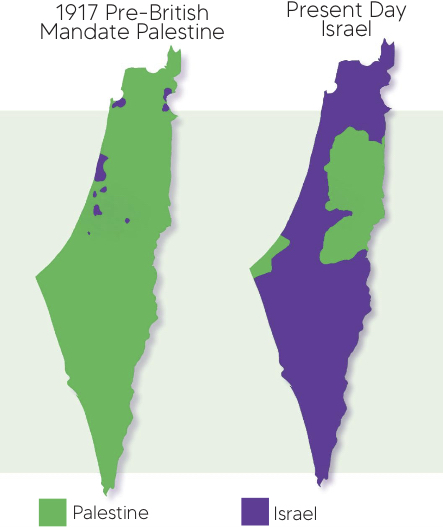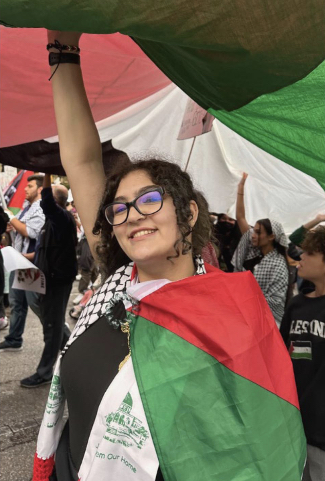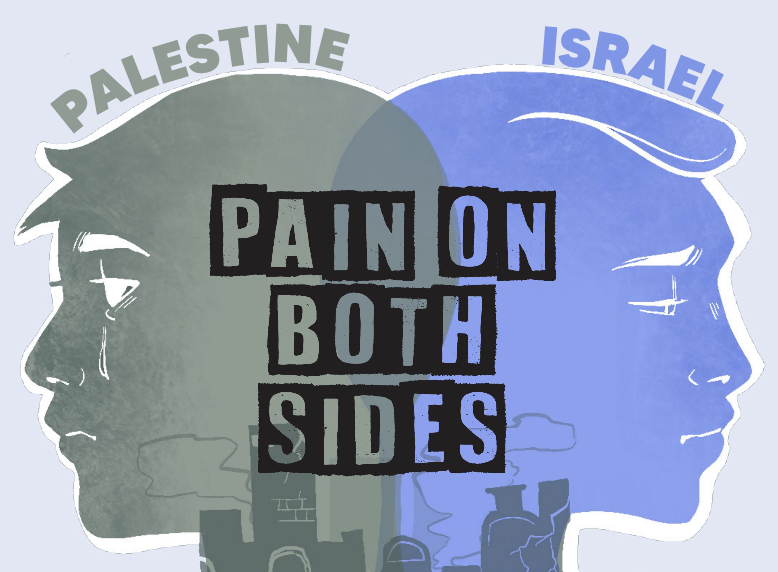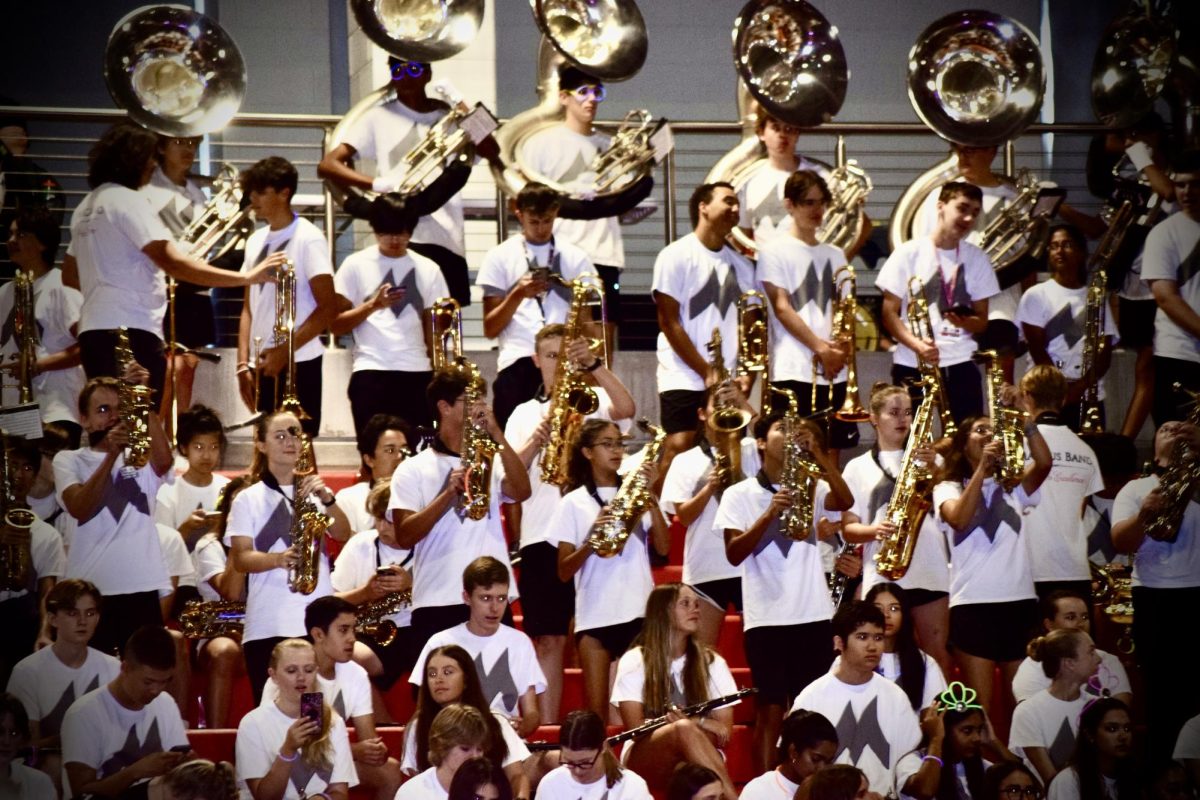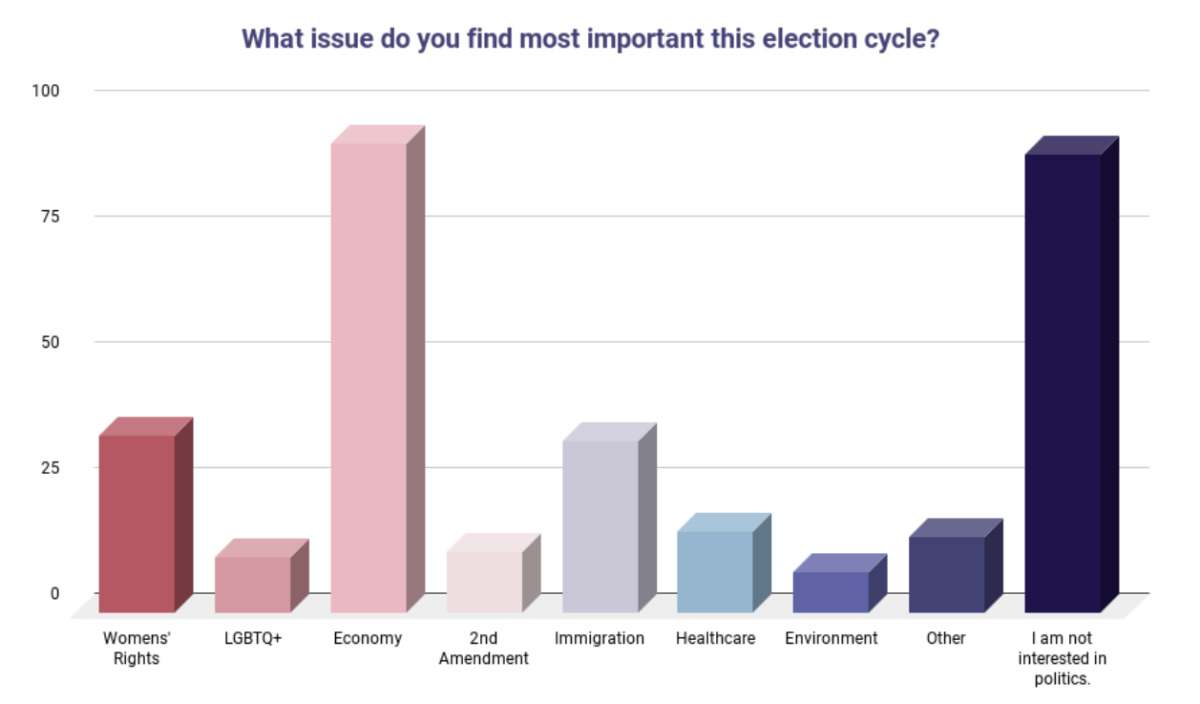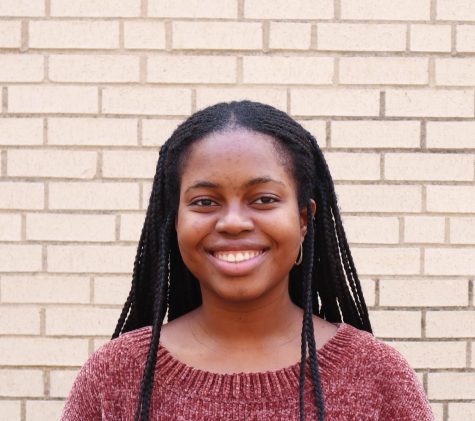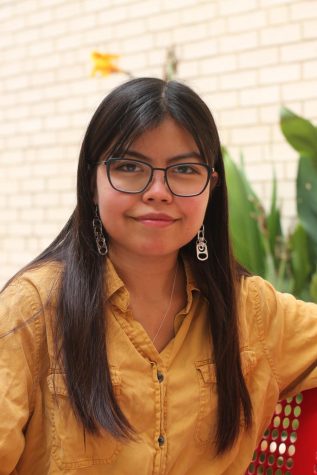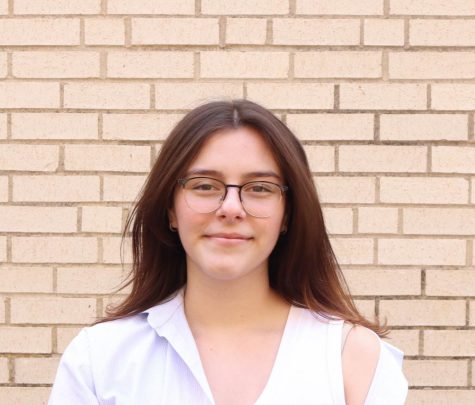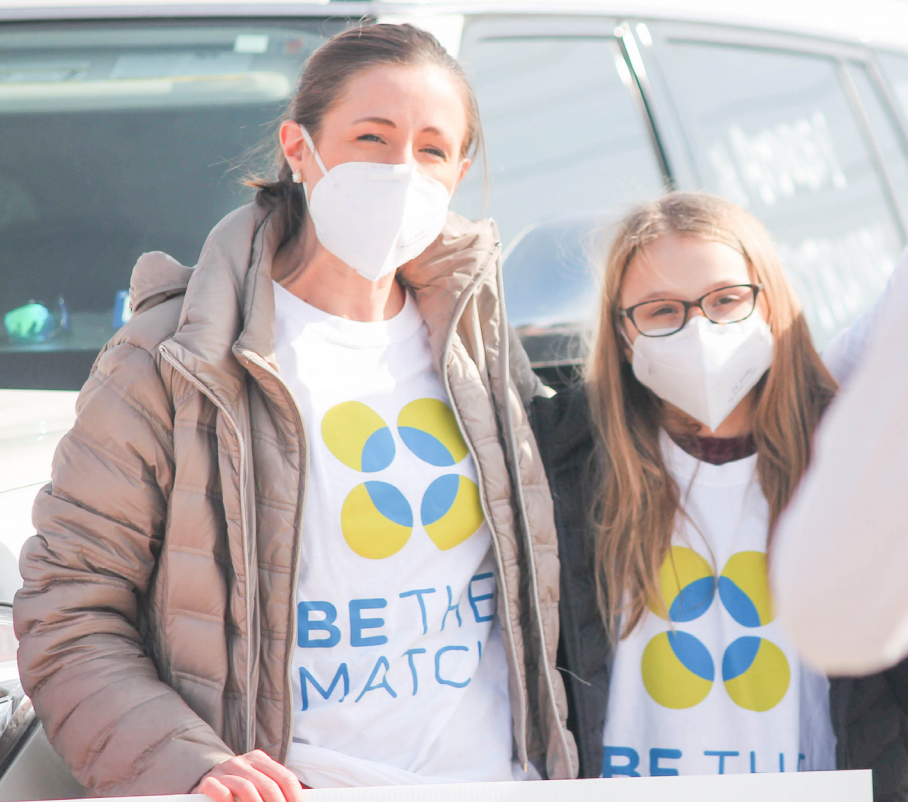
Editor’s note: This story won excellent for online news/feature stories in the 2022 TAJE Best in Texas contest.
When Briarhill Middle School student Audrey Gronberg went for a routine doctor’s appointment on Dec. 8, 2020, her mother, Kim, wasn’t expecting a call back from the endocrinologist.
“The doctor called and said, ‘Oh, there must be a mistake,’” Kim said. “‘We need you to come back in and repeat the blood work because it’s showing that all of her numbers are low.’”
But after a few more tests, they knew it was no mistake.
On Dec. 12, 13-year-old Audrey was diagnosed with severe aplastic anemia — a rare condition where the body stops producing enough blood cells. If left untreated, 70 percent of patients die within the first year.
“I think you just go into the mode of, ‘What do we need to do to take care of this?’” Kim said. “And of course, you go into the mode of just praying to God just to heal your child.”
Audrey’s sister, sophomore Morgan Gronberg, said that acceptance was initially difficult for the family. Life had been so ordinary before, with winter ski trips and family game nights.
“We’re just a normal family and we never thought anything like this would ever happen to us, and to Audrey,” Morgan said.
• • •
The most effective treatment would have been a bone marrow transplant, but neither of Audrey’s siblings were compatible marrow matches. Audrey started daily medications while the family looked for a donor.
Her immune system was weak, so once the family got home, they pulled up all their rugs to clean the floors and wiped down all their surfaces. They had to be careful to not expose her to any germs.
“We got lucky that she had not ever gotten sick, but a lot of kids that have this aplastic anemia, they’ll spike a fever,” Kim said. “And if you ever get a fever, you have to pretty much rush to the hospital so they can get you on IV antibiotics right away.”
Audrey also had to stay away from people who could be sick, so the Gronbergs stopped seeing their extended family. Kim and her husband Erik began working from home.
Because Morgan also couldn’t risk going out, she had a choice to make: either stay with her family and switch to virtual school for the next semester, or stay in school, where she knew she would learn better.
“[My mom] ended up having to be like, ‘What is going to be good for you in this situation is for you to go do normal life, be at school with your friends, and go live with your grandma,’” Morgan said.
Audrey also had to learn virtually for the next semester. As a kid who used to spend plenty of time with her close friends at school, barely seeing anyone outside her immediate family was a hard transition.
“You just want to be a normal kid and go to school and hang out with your friends, and so it’s hard not knowing how long this journey’s going to be,” Kim said.
• • •
On Jan. 1, Audrey was checked into the hospital for treatment. Only one parent was allowed to be with Audrey because of COVID, so Kim and Erik took turns. When Kim was with Audrey, they walked in circles around the hospital, played games and watched movies, but sometimes Audrey had to rest.
“A lot of times, she didn’t feel like doing a whole lot of anything,” Kim said.
Audrey’s blood pressure spiked, and she had a severe headache that made it hard to sleep. Kim watched as her daughter, who used to dance competitively, got winded from small amounts of exercise.
Kim said that Audrey was always mature and continued to be after the diagnosis. She was in the room when the doctor first said the words “aplastic anemia” and completely understood what was happening. But it was obvious that she was in pain.
“There’s nothing worse than seeing your child hurting,” Kim said. “And you just wish so badly that you could take it away from them.”
• • •
Kim texted her close friend and neighbor Tamara Lisby about Audrey’s condition soon after she was diagnosed. Tamara was devastated.
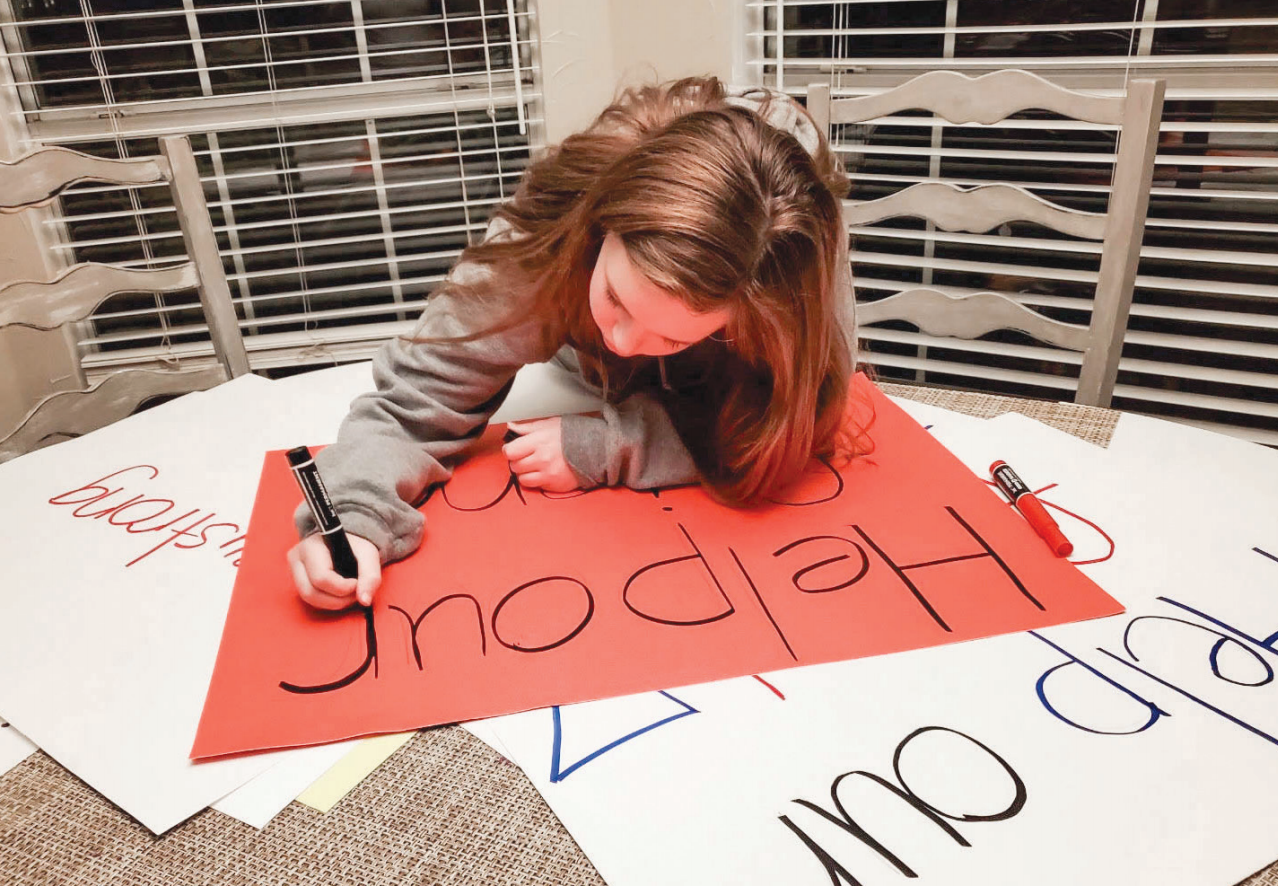
She and Kim had become friends when their kids started kindergarten together, and Tamara’s son’s first play date had been with Audrey. Since then, the families celebrated life milestones and birthday parties together.
“Audrey is such a sweet, caring and giving young lady who would absolutely without hesitation give the shirt off her back for anybody,” Tamara said.
Tamara wanted to help, so she and some other friends immediately started organizing a bone marrow drive to take place on Jan. 9.
“Once we got that, we at least had a mission,” Tamara said. “We at least had a way to try to feel like we were doing something productive for the family.”
Word about the drive spread quickly through the Gronbergs’ church, news stories and social platforms. People even called the Gronbergs’ friends and asked to volunteer.
A group of Audrey’s close friends, including Tamara’s son, Fox, jumped at the chance to help. They made posters for the drive and held them on the side of the road, asking people who drove past to consider donating.
“Once we got the news, [we] were heartbroken,” Fox said. “And we decided to talk about it and we kind of made plans, and decided that we needed to do something and help our friend out.”
Over 300 people showed up on the day of the drive to donate, while almost 70 people registered online.
“It was overwhelmingly emotional,” Tamara said.
Audrey didn’t get a match, but the group wasn’t discouraged — they were excited about the amount of people willing to help and held three more drives. The community also gave Audrey valentines, organized a parade to drive past their house, and made shirts that say “#Audreystrong” on the back.
“I know the impact that [the Gronbergs’] support has given them has been more powerful than they ever dreamed of,” Tamara said. “And I think it’s probably what’s helping them day to day.”
• • •
Morgan moved back in with her family in early February after Audrey started responding well to therapy.
“I have to have my mask on, of course, and keep distance, but it’s going uphill,” Morgan said.
If Audrey continues to improve, she might not need a transplant, but the Gronbergs are still looking for a donor. All Kim can do now is wait for a donor and remain hopeful about the future.
“It’s definitely a hard place,” Kim said. “But we also just depended on our faith, to know that we have to give this over to God, and trust that this is going to be OK.”
To register as a bone marrow donor, click here.






